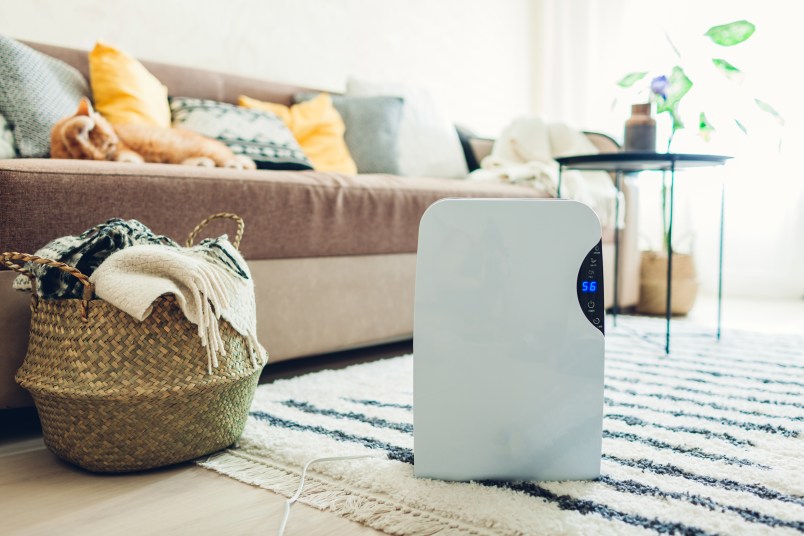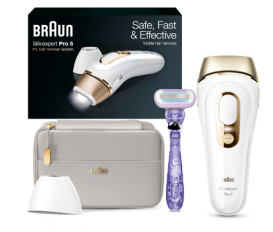7 Ways to Make Your Home Asthma Proof

One of the biggest factors that can trigger an asthmatic attack is the presence of allergens, which are more common during the changes of the seasons. While many of us are aware of allergens and airborne pollutants outside the home, research has shown that we are now spending up to 90 percent of our time indoors: sleeping, studying, working, eating, and exercising. As such, creating a healthy indoor environment is a lot more important than many would think.
“It’s critical to remove as many triggers as possible — from removing dust mites and animal dander to introducing flora and eco-friendly cleaning products — and implementing clever techniques to ensure they won’t return,” says Amcal Senior Pharmacist James Nevile.
To help safeguard against asthma attacks, here are our top tips for creating an asthma-friendly home.
Vacuum Often
It goes without saying, but many allergens and pollutants that can trigger asthma symptoms are airborne and naturally, these can end up on the floor of your home and embedded within textiles like carpets, rugs, and curtains.
Regular vacuuming with a HEPA filter captures the finer particles that trigger asthma symptoms, and installing extractor fans and air vents throughout the home will improve ventilation, removing asthmagens from the environment.
When vacuuming, make sure you’re using the right kind for different surfaces to ensure maximum efficiency, and try and reach into traditionally dusty areas within the home for a thorough clean.
Go Eco-Friendly
In preparation for cleaning your home, spending a few short minutes reading product labeling will bring great benefit to you (and others).
Bleach and other chemicals such as monoethanolamine, diethanolamine, and triethanolamine that are typically found in tile cleaners and laundry detergents contain asthmagens, as well as ammonia in window and mirror-cleaning products.
The eco-friendly alternatives are generally the safest, and blending white vinegar with water is an affordable and safe substitute!
Fabric Matters
Much like with carpet, allergens can easily end up building up in textiles so be careful with your material choices. Plush rugs and throws should be avoided as they’re notoriously effective at building up dust without regular cleaning.
Don’t be tempted to opt for the cheaper bedding – purchasing hypoallergenic (or non-allergy producing) bedding materials such as mattress protectors, sheets, duvets and pillows will deter dust mites from nesting and making themselves comfortable.
Bedding derived from all-natural fibers like organic cotton and silk are soft and will help resist the asthmagens as they are naturally hypoallergenic. Washing all your sheets and blankets each week in warm water will make a huge difference too!
Airborne Pollutants
For many asthma sufferers, this one goes without saying — but it’s important to avoid these elements, especially in an indoor environment, when you can help it.
Common household products like cleaning products and gas hobs can release fumes and odors that can be detrimental to asthma sufferers, as can an array of self-care products like makeup, hair spray, and perfumes. Scented candles and diffusers are also a source of airborne pollutants, so best to avoid those if you can.
Pet Control
As much as we love our furry friends, pet dander is a significant contributor to allergens, so to prevent attacks from occurring, it’s best to keep your furry friends outside whenever possible and wash them regularly to reduce the spread of hair around the property.
Add Plants
It may seem like an unusual suggestion, but indoor plants can significantly improve the quality of oxygen in your home, which in turn reduces the number of asthma triggers that may be in the space. Having just one plant featured in a room where people spend most time, for example, the living room, acts as a sponge whereby it will absorb various toxins, chemicals, asthmagens, and pollutants, and replaces them with fresh oxygen.
Clean Your Air
Thoroughly cleansing the air in your home of harmful airborne pollutants with an air purifier is one of the most efficient ways to keep harmful allergens at bay.
Air purifiers like Dyson’s Pure Cool Me easily detect and cleanse airborne pollutants within indoor spaces with the added bonus of also acting as a portable fan. Just be mindful of the size of your home as they only cover a specific range, so you may need multiples.
This article originally appeared on our sister site, Homes to Love.
More From Woman’s World
5 Easy DIY Ways to Deal With Unwanted Pet Messes













